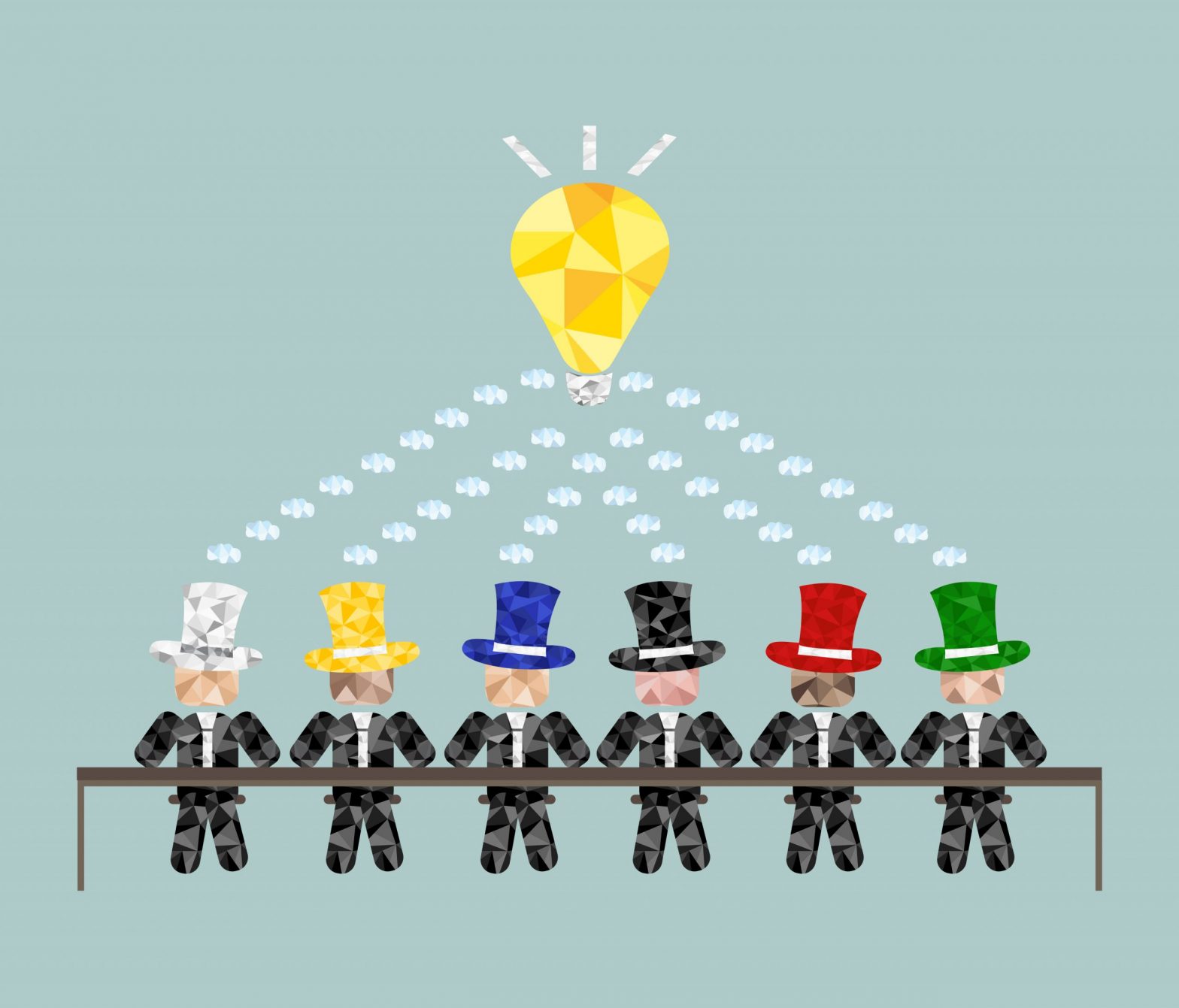
USING THE SIX THINKING HATS IN PROBLEM-SOLVING: An Effective Approach to Teamwork and Team Building
Problems are inevitable for any organization. And it is the goal of any team to find ways to get through them. In most cases, a problem could not be solved by only one person; that is why teamwork is required in finding solutions. When there is teamwork, team members can bring a diverse set of skills that provide a great opportunity to find the best solution. Since a team is comprised of people that bring a unique skill set, it provides the team with a “the whole is greater than its parts” setup which makes solving any problem easier to handle.
There is a powerful technique devised by Dr. Edward de Bono in 1999 called the Six Thinking Hats. This technique is a powerful tool for teams to look at problems from different perspectives. It helps team members understand the complexity of a decision and identify issues and opportunities which they may overlook. This enables them to make the best decision. I normally share this technique in most teamwork and team building sessions I do with my clients. Here are the six thinking hats.
The White Hat – Neutrality
On this hat, participants state all the facts including information that is absent. The opinions of people who are not present in a problem-solving situation are also considered. This way, people see the problem at a neutral state.
The Red Hat – Feeling
Participants exercise their instincts on this hat. At this point, they state their feelings so as to get everyone involved to identify their top two or three choices from a list of ideas or items. It is normally done quickly compared to the other hats to make sure that their views are stated based on gut reaction. Normally, this is a method used for harvesting ideas from the team. In some cases, this hat is used to review personal progress or to deal with issues where there is high emotional content that is relevant to the discussion.
The Black Hat – Negative Judgment
This is where participants practice critical thinking. It is on this hat where barriers, hazards, risks, and other negative ideas are identified. Problems and mismatches are seen. Sometimes, through this method, the flow of group discussion is hurdled, especially when not requested or when not appropriate. Inappropriate use of this hat hinders effective group thinking.
The Yellow Hat – Positive Judgment
Quite the opposite of the black hat, it is on this hat where participants identify the benefits associated with an idea or issue. Though some may say that this could be a form of blind optimism, it is actually still a matter of judgment. In other words, it is an analytical process. Normally, the benefits out of the given ideas are stated. The likelihood of achieving the given ideas and the key supports available that will benefit the course of action are identified.
Green Hat – Creative Thinking
New possibilities are identified using this hat. Inasmuch as green hat thinking covers a spectrum of creativity, it can take many forms. Things are said for the sake of seeing what they might mean, rather than to form a judgment. Team members squeeze their creative juices and solutions are often thought out of the box. In other words, this is the hat of thinking new thoughts.
Blue Hat – The Big Picture
Under this hat, participants discuss the thinking process. Normally this hat is used at the start and end of each thinking session to set objectives, to create the path to reach them, to evaluate where the team has gotten to, and to tell where the thinking process keeps going. Normally, the facilitator of this thinking session maintains this role to make sure that the team remains focused, and thus, increases their opportunity to achieve their objectives.
The goal for every problem-solving situation is to generate as many ideas as possible and subsequently sort them out and eventually refine them. This is done through brainstorming. To come up with the best solution, a consensus is needed so everyone feels that he or she has one solution that does not compromise any strong convictions or needs. In order to achieve this, team members must share, discuss, evaluate, organize, and prioritize ideas. They must work on reaching the best conclusions together.
Members of a team are unique. With the variety of skills and views that exist in a team, it is easier to see a problem from different perspectives. Hence, better decisions are made when all factors of a problem are considered.
Reference:
Collier, C. (2015). The Science and Art of Teamwork and Team Building. Atlanta, Georgia: Personality Matters, Inc
Phone: (404) 287-0619
Email: askdrcherry@gmail.com
Blog: https://drcherrycoaching.com/myblog/
Web Personality Matters: www.pmatters.org
Web Dr. Cherry: https://drcherrycoaching.com/
My latest books:
http://smile.amazon.com/s/ref=nb_sb_noss_1?url=search-alias%3Daps&field-keywords=dr.cherry+collier&rh=i%3Aaps%2Ck%3Adr.cherry+collier
Image: Shutterstock paid subscription all rights reserved

